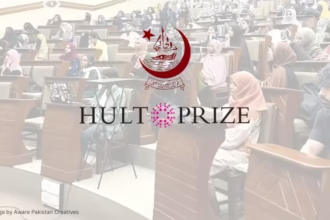Pakistan stands at a pivotal juncture in its quest to refine its approach to information management. It faces a crucial decision between two contrasting media models: the Chinese and the Russian. Historically, the Russian model held sway, but the digital age has ushered in a new era of information regulation and dissemination, eroding the influence of this paradigm. Simultaneously, the Western media model, championing unrestricted freedom of speech, has gained global prominence, yet it has drawn criticism for occasionally disrespecting religious beliefs and family values. Striking a balance between freedom of speech and cultural respect is paramount.
Non-Western countries have adopted distinctive information management approaches that deviate from Western propaganda methods. While the Western model prioritizes freedom of speech, we must also acknowledge the sway of influential figures advocating for certain interests, potentially silencing dissenting voices. Addressing this issue necessitates ensuring that freedom of speech doesn’t become a tool for censorship.
On a global scale, it is imperative to grasp the dynamics of influential entities in North America, Europe, and Israel and their impact on NATO affairs. Collaborations with countries like India and Japan should be based on mutual respect rather than dominance. Pakistan can forge a more constructive approach to information management by harmonizing freedom of speech and cultural values.
The Western media model, while promoting freedom of speech, has been criticized for allowing disrespect towards religious and cultural values.
The issue of Zionist influence on international borders is intricate and touches countries like Pakistan, China, and Russia. While some perceive this influence as a hindrance, there’s potential for China and Russia to chart their own independent paths, fostering positive change. Pakistan faces its challenges, including the imprint of the Zionist elite on civilian administrations and military susceptibilities. However, there’s room for optimism, particularly with elected governments working to manage resources more efficiently.
The Chinese model offers an alternative to the Western paradigm. China’s approach to information management prioritizes internal stability and allows measured expressions of citizen concern. This approach showcases its effectiveness and offers a viable alternative for other nations.
China’s unique strategy of extricating itself from Western paradigms and shaping its global trajectory presents an intriguing model for non-Western countries. Russia, while making commendable progress, still lags behind China’s economic prowess. By consolidating media entities and employing advanced surveillance technologies, China’s media model shapes information transformation. Nonetheless, the impact on media freedom and democratic values warrants consideration. Pakistan can learn from China’s model, carefully weighing the balance between governmental goals and media liberty while promoting citizen empowerment and democracy.
China’s approach to information management is highlighted as an effective alternative to the Western model, emphasizing internal stability and measured citizen expression.
China’s media model offers a distinctive perspective on harmonizing governmental control, media freedom, and societal empowerment. While state-owned media dominate China’s landscape, government-controlled messaging maintains social stability and political unity. Simultaneously, China permits certain freedoms for citizen voices, offering valuable lessons for nations like Pakistan aiming to revamp their media environments. Pakistan could gain from studying China’s model, pursuing a strategy that balances state interests with media freedom and responsible journalism. By adopting China’s effective management of Western influences, Pakistan could foster a more informed and united society while upholding democratic principles.
To conclude, China’s media model provides valuable insights for nations looking to transform their media environments. Through a balanced approach that blends controlled information with responsible journalism, countries like Pakistan can cultivate an informed, engaged citizenry while upholding democratic principles and promoting social stability.








